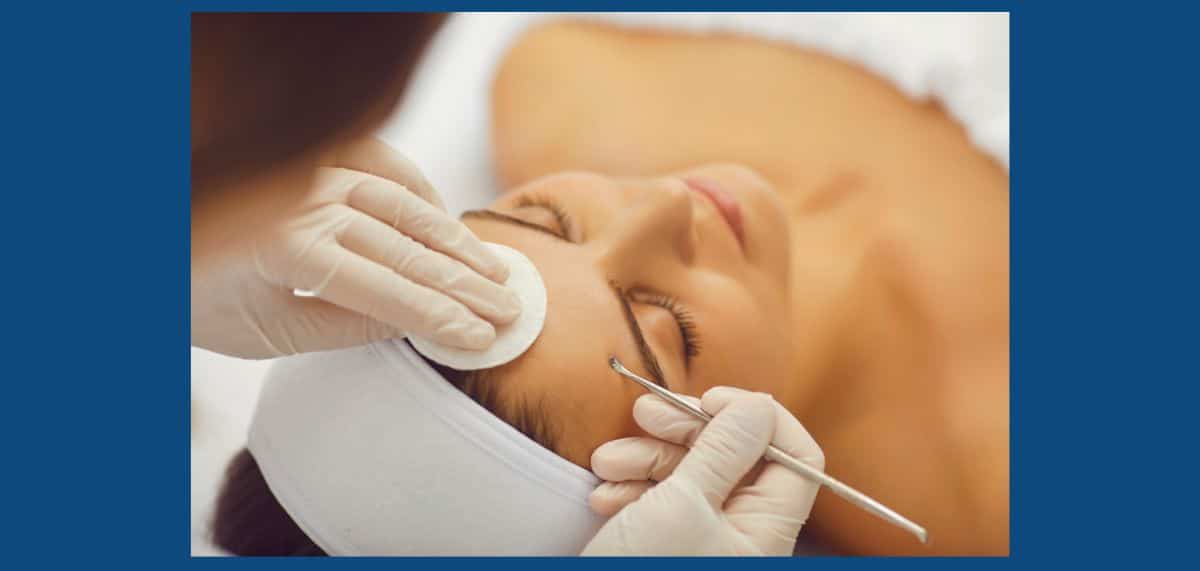
All You Need To Know About Chemical Peels

Who doesn’t appreciate a healthy glow in the winter months? Looking to enhance that well-rested youthfulness and turn back the time on sun damage and/or acne scarring? A facial chemical peel could help! Along with your usual skin care routine (cleanse, tone, exfoliate and protect) and daily hydration, nutrition, sleep and fitness regimen, chemical peels offer a chance to press the reset button on wrinkles, scars, acne, uneven pigmentation and dull skin.
What kinds of chemical peels are available?
All peels are not created equally. Depending on your skin care goals, peels come in a variety of depths–light, medium, and deep. Light peels are made for subtle yet noticeable results, while medium and deep peels are made to penetrate the deeper layers of the face. Each type of peel targets different layers of the skin and related issues. The deeper the peel, the longer the side effects (i.e. redness) and benefits (wrinkle reduction) can be expected to last.
Does it hurt?
Typically, no to low discomfort is felt during or after the light chemical peel. For those having medium and deep peels, expect to experience stinging sensations in the affected area. Topical cold packs and over-the-counter medications such as Acetaminophen and/or Ibuprofen may be helpful to alleviate the discomfort following the medium peel. Typically, the deep peel procedure takes place in a surgical suite with sedation. Discomfort occurs post-peel in the form of swelling, stinging, burning, and itching sensations. Dressings are applied, and oral pain medications are often prescribed to minimize discomfort.
Will regular chemical peels reduce the need for a face lift over time?
While chemical peels won’t tighten loose or sagging skin or erase deep scars or wrinkles, they do add value to your skin care routine and may prolong surgical interventions. Chemical peels resurface and exfoliate facial skin, providing a healthy foundation for daily care, sunscreen, non-surgical facial treatments such as injectables and in conjunction with facelifts.
Is it safe? What are the side effects?
When peels are administered after a full skin and health evaluation by trained and competent professionals, they are safe and provide consistent results. It’s best to avoid chemical peels if one has a history of reactions to ingredients in a chemical peel, an active infection the day of the treatment, is pregnant or has a history of keloid scars.
We’re unique and so is our skin! Depending on the skin’s general condition and sensitivity, as well as the peel depth (concentration and pH of chemicals utilized), one may expect to experience redness, swelling, tenderness, scabbing, peeling, change in color (lighter or darker) and, rarely, scarring. Expect to experience redness of the treated skin following a chemical peel which could last for several months after a medium or deep chemical peel.
How do I prepare for a chemical peel?
One of the most important things to do before and after the chemical peel is sun protection. Daily use of sunscreen is essential for overall skin health and for protecting your investment! Priming the skin 4 weeks before a peel treatment with tretinoin, all-trans retinoic acid or salicylic and glycolic acids may be recommended to increase the penetration depth and overall peel effectiveness. Also, Hydroquinone may be prescribed prior to the treatment for those who experience pigmentation issues. In the days before and after a chemical peel, avoid traumatizing procedures such as waxing, dermabrasion and injectables (neuromodulators and dermal fillers). Pre and post treatment, cleanse skin as usual and avoid the use of skincare and makeup.
The more you know, the more prepared you will be. You may expect the following before and after your treatment: To discuss your current medications, health history, previous response to facial treatments if applicable; to complete a consent for treatment, pre and post treatment photos and written post treatment instructions. Feel encouraged to ask questions and voice concerns both before and after a chemical peel. We are here for you!
Check out these additional chemical peel resources:
Chemical Peel. American Society of Plastic Surgeons.
Skin Resurfacing Chemical Peels. Shireen Samargandy; Blake S. Raggio

